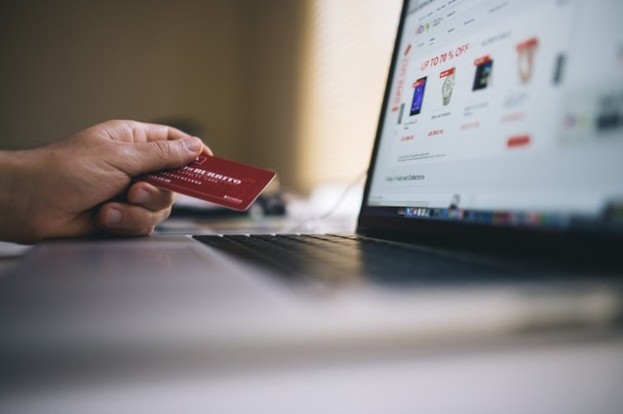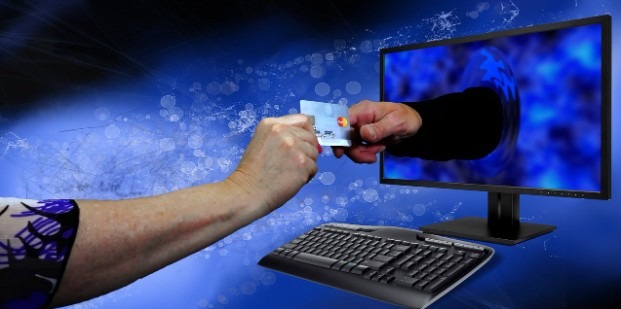In today’s society, it’s commonplace for physical shops and online vendors to accept credit and debit cards as a payment option. And with the COVID-19 pandemic, an increasing number of consumers are using these cards, considering that they do most of their transactions online.
According to a Business Insider report, the World Health Organization (WHO) has suggested contactless payments instead of the traditional cash transactions. This is because paper bills and coins may circulate the virus and other bacteria that cause illness. Although this is a speculation, many businesses have taken the cue and have gone cashless.
However, using these cards can also come with risks, especially when you don’t do your due diligence when shopping online. For that reason, it is recommended that you should do your part to ensure security for your bank card. The risks have opened up new jobs in the market for those who have undergone a Cyber Security course known as Certified Cyber Security Experts.
Credit Card vs Debit Card
First off, let’s make a distinction between a credit card and a debit card. While both of them seem identical in form, in function, they are actually very different.
Foremost, a credit card is issued and funded by a financial institution, which is usually a bank. Upon usage, the cardholder agrees to repay the bank within an agreed period of time and a certain interest rate. Typically, all credit cards have a spending limit, and maxing out this limit may require you to pay additional fees that can impact your credit score, especially when you don’t pay on time.
While a debit card is also issued by a bank, the difference is that you don’t owe the bank money when you use this card, as it is linked directly to your checking account. Basically, what you’re spending while using this card is rightfully yours. When your funds run out, you just have to deposit money in your account, and you’ll be able to use the card again!
People turn to credit and debit cards for their transactions, because these cards can get you a lot of rewards points. When accumulated, these points can be used for your future transactions. Most of these cards also offer cash back and rebates, depending on how much you spend. Check your particular bank to know all these perks and bonuses that are offered.
But perhaps, the most important thing these cards can provide consumers is convenience. You can easily buy the things you need and want wherever you are.
Keeping Your Credit and Debit Cards Secure
As previously mentioned, using credit and debit cards can also come with risks. In fact, according to a Nilson Report research on PR Newswire, the worldwide loss due to payment card fraud amounted to $27.85 billion in 2018. And, this number is forecast to rise to $35.67 billion in five years and $40.63 billion in 10 years. But the good thing is that disputing collections on credit report is simpler now and if you notice more issues, different banks even laid specific measures that you need to do to address your concern.
Now, to ensure your bank cards are safe from fraud, there are certain practices that you should observe.
The Dos
Examine your bank statements often.
Checking bank statements not only gives you an idea where you are (finance-wise) and shows you your spending habits, but it also allows you to check for any malicious activity. If cybercriminals get hold of your card information, they can use it to make fraudulent purchases.
If you suspect any unwanted charges on your bank statement, call your bank immediately to report such activity.
Enable two-factor authentication for mobile banking.
The two-factor authentication (2FA) system is an added security feature used by banks and financial institutions to protect their clients. This extra layer of security requires you to pass through two layers of verifications to confirm your identity before being granted access to your account. Although this process can’t totally protect you from potential hackers, it can help prevent unauthorized users from accessing your account.
Withdraw cash from ATMs in banks.
One way thieves steal people’s financial information is by installing skimming devices on ATMs, especially those found outside of banks. So, to ensure security for your bank card while withdrawing cash, only use ATMs inside the bank.
Modern banks already have multiple security cameras installed on their property, and you can rest assured that there will be one near their ATM. Plus, these machines are regularly checked for maintenance, so they’ll find out immediately if there’s some kind of skimming device installed.
Change your mobile banking password regularly.
Devices can store pieces of sensitive information, and it’s your responsibility to keep them secured. One effective way to do this is by changing your password regularly. Reusing the same few passwords can only get you hacked, not just in one, but also in your other accounts.
Changing passwords is also very important in case you lose your device. Contact your bank immediately if this happens, and make the necessary changes to your information.
Disable autofill in your browser when filling out forms.
Let’s admit it: the autofill feature on web browsers is a lifesaver. You don’t have to type in every detail on forms, as they are already suggested. However, this overreliance can also put you at risk.
In fact, the autofill feature can leak your information to third-party advertising scripts. They can run in the background without you knowing and then capture your credentials easily. Nobody wants to spend time typing in details repeatedly, most especially on a website they frequently visit, but in the long run, disabling autofill will save you from a lot of online risks.
The Don’ts
Avoid using public Wi-Fi for online transactions.
Although there is a good intention behind establishing public Wi-Fi access, it still poses a potential risk. Not all public Wi-Fi hotspots are encrypted. If the network is not secure, hackers can effortlessly position themselves between you and the connection point, allowing them to get your details while connected to a public Wi-Fi.
If you’re not at home and need to do a transaction, it’s safer to use your mobile data instead. Turn off the sharing settings on your device. Also, don’t forget to set a virtual private network (VPN) connection on your device as well. This can help encrypt all your data while you are connected to public Wi-Fi.
Never give away your PIN and card security code.
What is the PIN? It stands for “Personal Identification Number.”
Upon receipt of a debit card, the bank will require you to choose a unique PIN combination that you’ll use every time you make a transaction. This information should only be known to you.
One common fraudulent act occurs when identity thieves call you and pretend to be from a financial organization, usually a bank. Then, they would ask for your PIN or your card’s security code. Don’t fall for this trap. Moreover, take extra safety measures when typing in your code on ATMs or Point of Sale (POS) systems, like covering your hand while typing.
Don’t make transactions on unsecured websites.
The advancement of technology makes everything easier for us, and that includes making every transaction possible online. However, this also provides the opportunity for criminals to prey on vulnerable victims. One way to prevent them from stealing your information is to avoid conducting transactions on unsecured websites. Before making a purchase, here’s what you should do instead:
Check for encryption.
Check the website URL address on your browser. You should see an ‘HTTP’ or Hypertext Transfer Protocol. A lot of websites use this protocol, but unfortunately, they still don’t use any built-in security.
So, instead of shopping on HTTP sites, you should do so on websites that use the standard security technology called Secure Socket Layer (SSL). This ensures that all your information will be encrypted. If there’s SSL, you’ll most likely see ‘HTTPS’ instead of just ‘HTTP’ on the website’s URL address.
Check the legitimacy of a website.
Aside from avoiding unsecured websites, you should also look out for fake websites. Make sure that the website you’re accessing is indeed legit. Check for any spelling errors or poor content. Bogus websites also don’t provide clear contact details.
Use a security software.
The truth is, there will always be an online security threat. So, protect your device from being targeted by installing security software. Its features block phishing attacks and ensure that you are safe against harmful websites.
Avoid giving away your card details to unverified bank representatives.
Cybercriminals can easily present themselves as bank representatives who ask for your card details. Don’t be deceived by this popular scammer trick. Banks or any legitimate financial institution would never ask for this private information, especially during a random, unsolicited phone call.
If you received a suspicious call, email, or text message, report it to your bank immediately. You can tell the caller that you will simply call them back yourself. Most likely, the fraudulent caller will insist you give him or her information right away. If a caller sounds legitimate, and you do get a number to call back, make sure that the number provided is authentic. You should look it up online if it matches the company’s website information, or you can ask further questions upon reaching that number to verify authenticity.
Never post photos of your credit card.
Taking pictures seems to be almost everyone’s thing on social media today. However, you have to be careful about anything you share online. Posting photos of your credit card, regardless if you have hidden sensitive information on it, is a terrible idea. Cybercriminals are clever and can use the tiniest details about your financial information to commit fraud.
Conclusion
Card fraud has become rampant these days. Nonetheless, there are best practices that you can follow to ensure that the security for your bank card remains intact.
For your guaranteed peace of mind, you can also work with companies that offer card security solutions. To get in touch with such companies, like Triada, click here.
And for more of the latest technology tips, information, and updates, browse our website!



